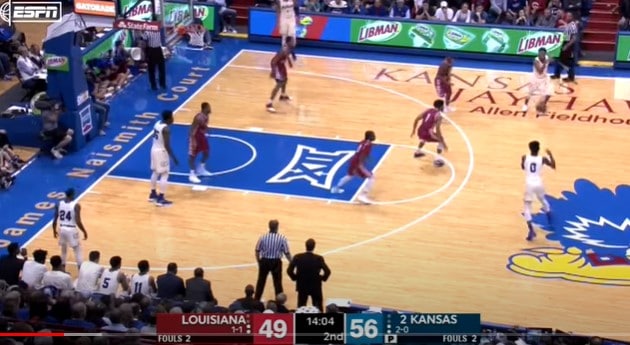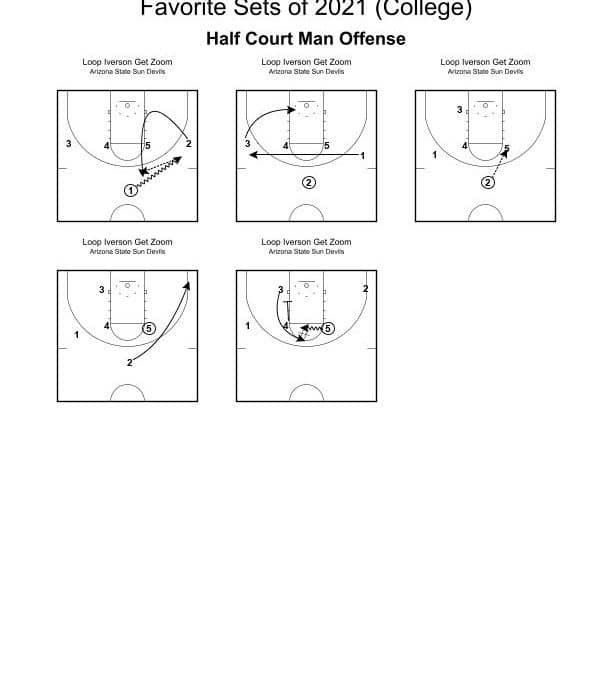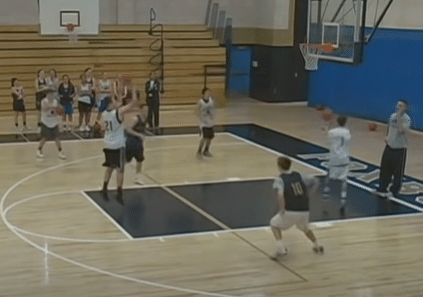Mid Game Adjustments: Part 1: Preparation by Craig Shorey
You’re down 10 points after the first quarter. Simple math tells you if the same things keep happening in the same way you’re about to get beat by 40 points tonight. You have about 60 seconds to come up with a new plan and articulate it in a manner that you players can believe in and execute. How do you make these adjustments?
First, is preparation. My job as a coach is to have my team ready for every possible situation. When our team encounters something we are skilled enough to handle but are not able to execute, it’s my fault. Period! My fault. If you have prepared your team, you can simply signal for the play you want and then the change is made.
There is no substitution for being prepared. Sometimes circumstances make it difficult to have covered every scenario before the game is played. One year when I coached middle school boys we were only permitted 4 hours of practice before our first game and it was against our cross town rivals. The NCAA has had limited practice time for years now and 20 hours can go quick. Even in the NBA you may have just traded 3 key players and there is game soon.
At any level if your players know how to play man to man, one zone and trap, you can adjust in the game with one timeout. If they are prepared with that information you can take those things and just change them to either full court pressure, 3 quarter person, half court pressure or quarter court pressure (don’t pick quarter pressure unless you’re up 30 or nobody on the other team is physically capable of shooting a 3).
The easiest, quickest and overall most effective in game defense adjustment is to simply switch to full court man to man. 1st graders can make this adjustment on the spot. The only difficulty here is having your players match up quickly and knowing who they have. Of course you may want more than just full court man but you just can’t beat this mid game change in terms of simplicity and effectiveness.
Let’s say you’re coaching high school freshmen girls, they have never played basketball before and you have only had time to teach them one zone, the 2-3 zone. You could call a timeout draw out the 2-3 zone full court and even say “we are going full court 2-3, except I want the middle here at the back.” Draw out where you them to stand and who has what area. You give it a name and you have a 2-2-1 zone. Now you can adjust it during the game and in the next practice. If you want can even circle where you want the traps and where you expect to get the steals.
On the offense side of the ball you can do the same thing. You must have at least a main set and for this article it doesn’t matter which one it is. Mine has always been a motion. Then have a secondary set which for me has been the 4 low. Whatever age I’m coaching the players must know how to screen (I’ve seen NBA mess that up), roll off a screen correctly (I get sick every weekend watching NCAA players either not roll or roll the wrong way), cut to the basket and shoot an open shot. If you players can do those four things you can adjust your half court game on the fly.
I include “shoot an open shot” because plays are designed to get an open shot. At the high school level I have seen a million times a wide open player (I mean it, know nobody guarding them) on the block during an inbound play but they run and set the screen anyway. Teach players if they have a good shot, take it! You don’t have to run the whole play.
If you’re playing against a really good zone, you’re motion may not work that great against them. Some easy pick and roll action can change that up. Call out your 4 low play and now the D has play man. Plus, if you see you have an inside advantage, have your players go 4 high and easily get them to play high low, even if they have never practiced it. In rare cases you could even place your players on one side like a stack and run the same court movements as any 4 high or 4 low set. If you’re not scoring you have try some adjustment.
You have to have a plan to beat the press and traps before it happens. If your players (and the younger they are the more true this is) see a press or trap for the first time during a game and not in practice you in trouble. Your quick options are to again use your primary or secondary set but at the other end of court or call a time out show where you want screens.
In a perfect world, you’re team has practiced and planned for every conceivable game situation and you have play or a defense that has a name and you just call it out. You’re players then perform that plan with excitement and perfect execution (assuming they even remember that play). If you don’t live in that perfect world have your players armed with these simple things at any age level and you can adjust to virtually anything you need during the game:
Defense: Man to Man, a zone (any zone is fine) and how to trap. Remind players to stop the ball.
Offense: You’re main set, secondary set, screens and roll. Remind players to move, either towards the ball or the basket.
Craig Shorey Bio:
Maricopa, Arizona
Graduated form Western Governors University and is currently pursuing a Masters from Grand Canyon University.
Coaching Experience: Craig is in his 6th season combined at the Middle School, and High School level. He also coached for the Phoenix Suns Basketball Summer Camp program. He has two middle school championships with one undefeated season.
Work: Currently he is teaching U.S. History at a middle school in Maricopa, Arizona. He was also his districts Coach of the Year for the 2013-2014 school year.
Favorite Quote: “Do not let what you cannot do get in the way of what you can do.” John Wooden

Follow Coach Craig Shorey on Twitter!!!
Click on the pdf link below to download the Mid Game Adjustments on Preparation:





0 Comments